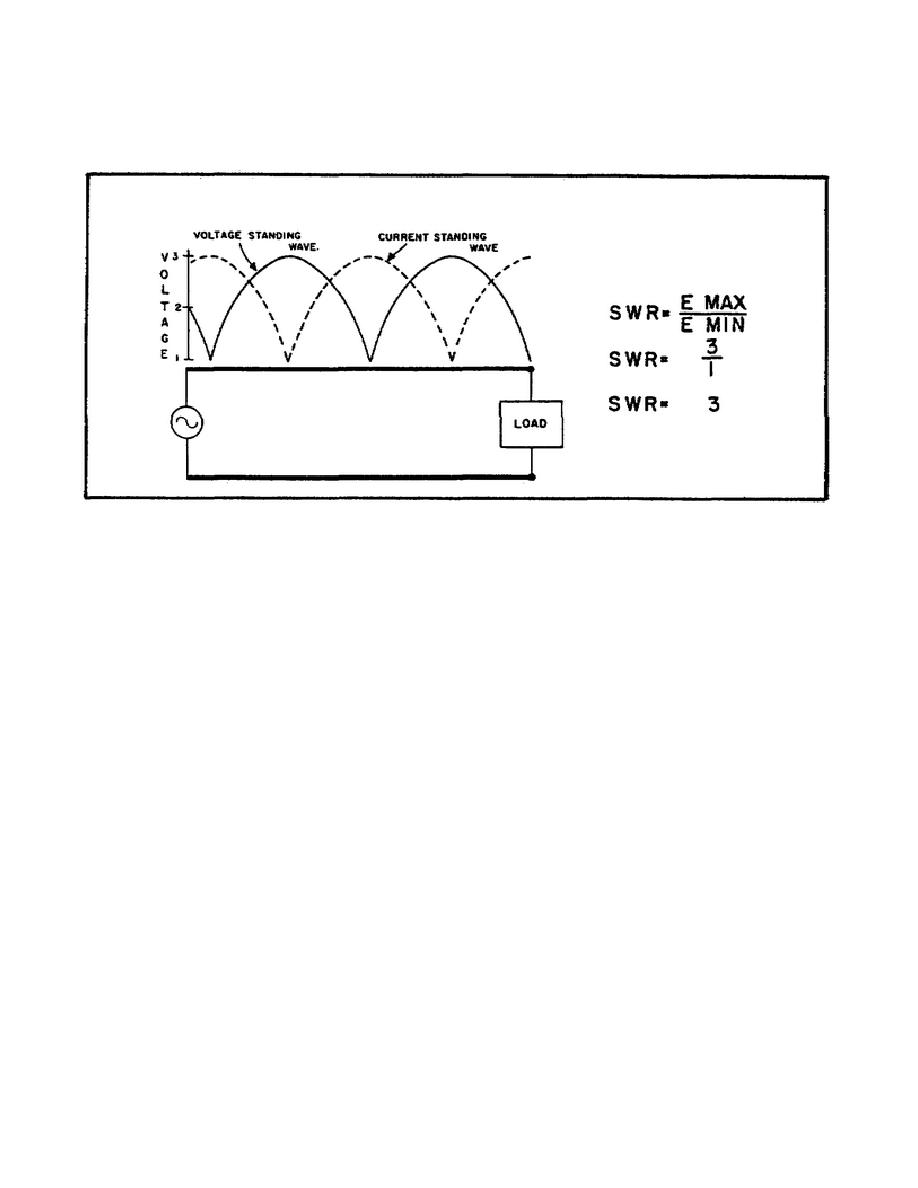
d. An SWR of 3 indicates that the load impedance is either three times
greater than the Zo of the line or one-third the Zo of the line. In this
case, the load impedance is one-third the Zo of the line because the voltage
at the load is a minimum.
Figure 15. Measuring the Standing-Wave Ratio.
27. The SWR indicates an impedance mismatch.
a. The standing wave ratio is actually an indication of the degree of
mismatch that exists between the load and the transmission line. When the
transmission line is terminated in a resistive load equal to the Zo of the
line, the maximum and minimum values of voltage are the same.
In this
matched condition, the SWR is 1 and the line is called a matched or flat
line. There are no reflections; all the RF energy is absorbed by the load.
A matched line is also called a non-resonant line.
b. When the load impedance is not equal to the Zo of the line, you will
get an SWR greater than 1.
The line is called a mismatched or resonant
line. The resonant transmission line can then be represented by a series-
resonant or a parallel-resonant circuits, depending on the type of load and
length of line used. The SWR is highest when the line termination is either
a short or an open circuit.
c. The standing-wave ratio may also be defined as the ratio between the
maximum current and the minimum current.
To measure the standing wave of
current, an RF ammeter or a DC ammeter with a rectifier is used. The meter
is connected to a loop of wire which is then placed close to the lines to
couple into the magnetic fields.
Part A of Figure 16 shows how this is
done; Part B of Figure 16 shows the circuit for the meter.
19



 Previous Page
Previous Page
